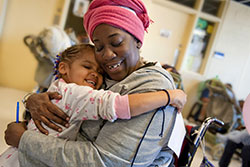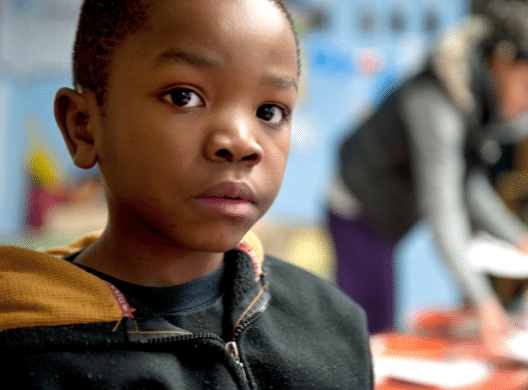By Melissa Genadri, Poverty & Health Policy Associate
Childhood lead poisoning is an urgent – albeit entirely preventable – crisis in New York, representing a grave threat to our most vulnerable children. New York has more known cases of children with elevated blood levels than anywhere else in the nation, with childhood lead exposure rates for communities across our State and in New York City five to six times higher than those in Flint, Michigan at the peak of its water crisis and New York’s burden of older housing stock placing residents at particularly high risk of exposure. The American Academy of Pediatrics, Centers for Disease Control and Prevention and World Health Organization all agree that there is no safe level of lead for children. Lead poisoning’s irreversible long-term impacts include learning disabilities, aggravated behavior and decreased cognitive ability, and even low levels of lead affect our children’s intelligence quotient (IQ), academic achievement, concentration, hearing and speech.
Childhood lead exposure poses a significant financial burden on our State and its families. Among New York children born in 2019, childhood lead exposure is projected to cost our State an estimated $6.4 billion through reduced lifetime productivity, premature mortality and increased spending on health care utilization, education and social assistance, not to mention costs linked to juvenile and adult incarceration. Aside from these societal costs, families of lead-exposed children must often shoulder substantial immediate and long-term costs including those associated with immediate medical intervention, costs associated with treatment of lead-related attention deficit hyperactivity disorder (ADHD) and special education services, and parental work loss to care for a lead-poisoned child.
Unsurprisingly, pervasive racial and socioeconomic disparities exist in New York’s burden of childhood lead poisoning, with children of color and low-income children most likely to live in high lead-risk housing and households that may lack capacity to reduce lead hazards. According to the New York State Department of Health, more than half of New York children identified with blood lead levels over 10 µg/dL in 2005 resided in just 68 of the over 1600 zip codes in our State, most of which encompassed communities of color in older urban areas. The majority of New York zip codes with the highest proportion of lead poisoning cases are located within Buffalo, a city whose population is mostly comprised of racial minority groups and a city in which children from neighborhoods of color are twelve times as likely as children from predominantly white neighborhoods to test for elevated levels of lead in their blood. New York’s clear distribution of childhood lead poisoning affirms lead poisoning as racial and environmental injustices – and makes the need to act to stop it even more of a moral imperative.
We are not defenseless in the fight against childhood lead poisoning. To truly make this a disease of the past, our State must make bold investments in children and families. As a cofounder of the Lead Free Kids New York (LFKNY) coalition, Children’s Defense Fund – New York (CDF-NY) is advocating for a variety of policies to end our State’s childhood lead exposure and poisoning crises. New York must enact and fund a statewide program of proactive inspections of rental properties. Our State must require residential property owners to test for lead-based paint before selling or leasing their property and to file a report with the Department of Health to better track and address lead poisoning (S. 2142-A [Kavanagh] / A. 6608-A [Rivera]). New York should assume enforcement of lead-safe renovation, repair and painting (RRP) activities (S. 6554 [Bailey] / A. 7117 [Bronson]) and protect our children against lead in school drinking water (S. 2122-A [Rivera] / A. 160-B [Gottfried]). We must also prohibit insurers providing liability coverage to rental property owners from excluding coverage for losses or damages caused by exposure to lead-based paint (S. 3079 [Ryan] / A. 7488 [Rivera]), so that insurance companies can no longer deny claims when children are poisoned by lead in their homes. Additionally, we must pass ‘Dakota’s Law’ (S. 5024-B [Rivera] / A. 7325-A [Peoples-Stokes]), which seeks to prevent and address elevated blood lead levels in children.
Tomorrow, the Senate Standing Committee on Health and the Senate Standing Committee on Housing, Construction and Community Development will hold a Joint Public Hearing on childhood lead poisoning in New York – the Legislature’s first hearing on this critical topic since April 1994. For far too long, our State has employed the morally bankrupt practice of using vulnerable children as canaries in a coal mine – testing strips to detect the presence of lead after their health has already been permanently damaged. New York’s children deserve a better fate than to be unknowingly and irreversibly harmed in their own homes through no fault of their own or their families. In the wealthiest nation in the world and in a state as affluent as ours, it is economically short-sighted and a blatant moral failure not to prioritize the health and safety of the youngest New Yorkers by acting swiftly and decisively to prevent as dangerous a threat as childhood lead poisoning.
Read CDF-NY’s testimony for the Joint Public Hearing to Discuss Childhood Lead Poisoning Prevention in New York State here.




